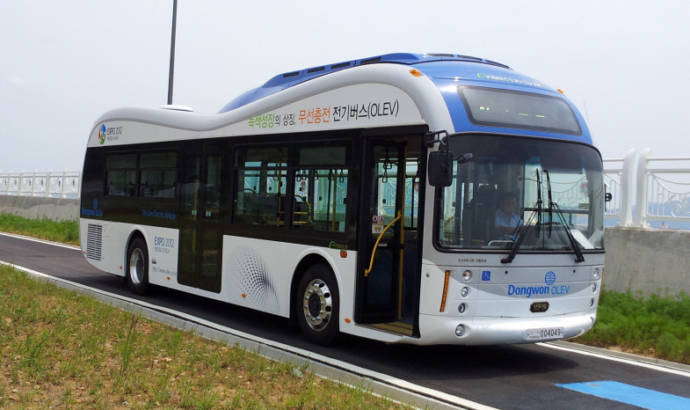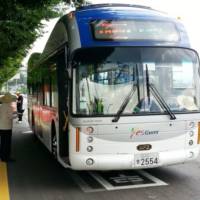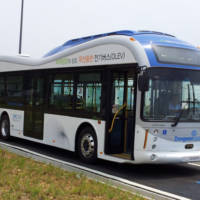The South Korean Advance Institute of Science and Technology (KAIST) have introduced in Gumi city a wirelessly charged electric bus. This technology has been already used on trams at Seoul Grand Park amusement park and shuttle buses in school campus.
The new wirelessly charged bus will travel between Gumi train station and In-dong district. This is not a new technology. The scientist already used this source on charging phones and toothbrushes.
This technology uses two magnetic charge plates. One is found inside the bus, while the other one is placed beneath the roadways. When an induction-capable bus passes over the charging plate, the two magnets turns on and the electricity charges the on-board battery.
“The Online Electric Vehicle (OLEV) receives power wirelessly through the application of the “Shaped Magnetic Field in Resonance (SMFIR)” technology. SMFIR is a new technology introduced by KAIST that enables electric vehicles to transfer electricity wirelessly from the road surface while moving,” said Lan Yoon from Eureka Alert.
These two buses will have a 15 miles route but thanks to these technology the battery pack is a third size of the one found on an electric car. Between the two magnetic plates is a gap of only 6 – 7 inches which means that there is an 85 percent charging efficiency.
The charging plates beneath the roadway are switched off until the bus approaches. According to the Korean officials, if the tests work well, 10 more buses will be placed on the streets.

11 Aug 2013
0




